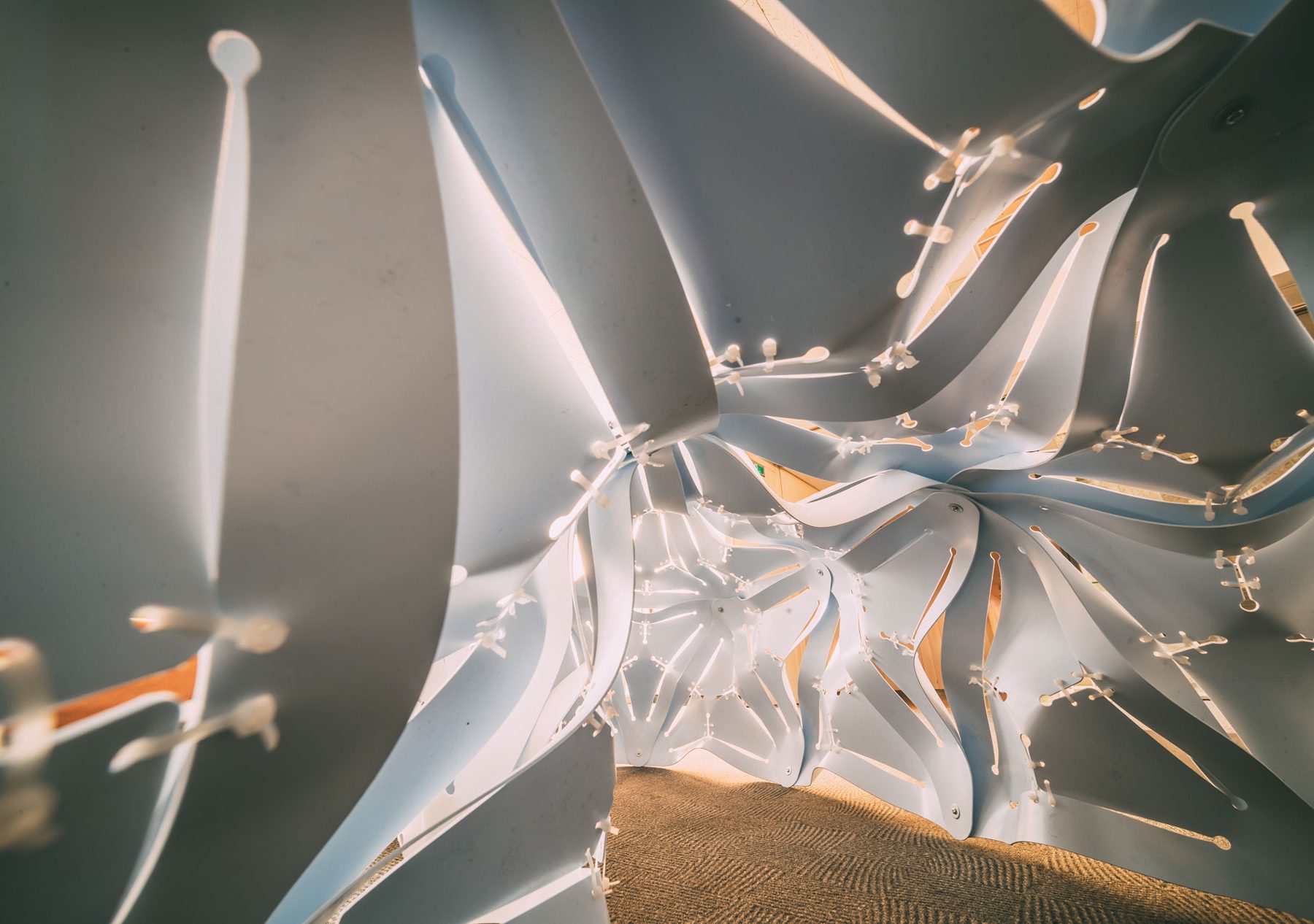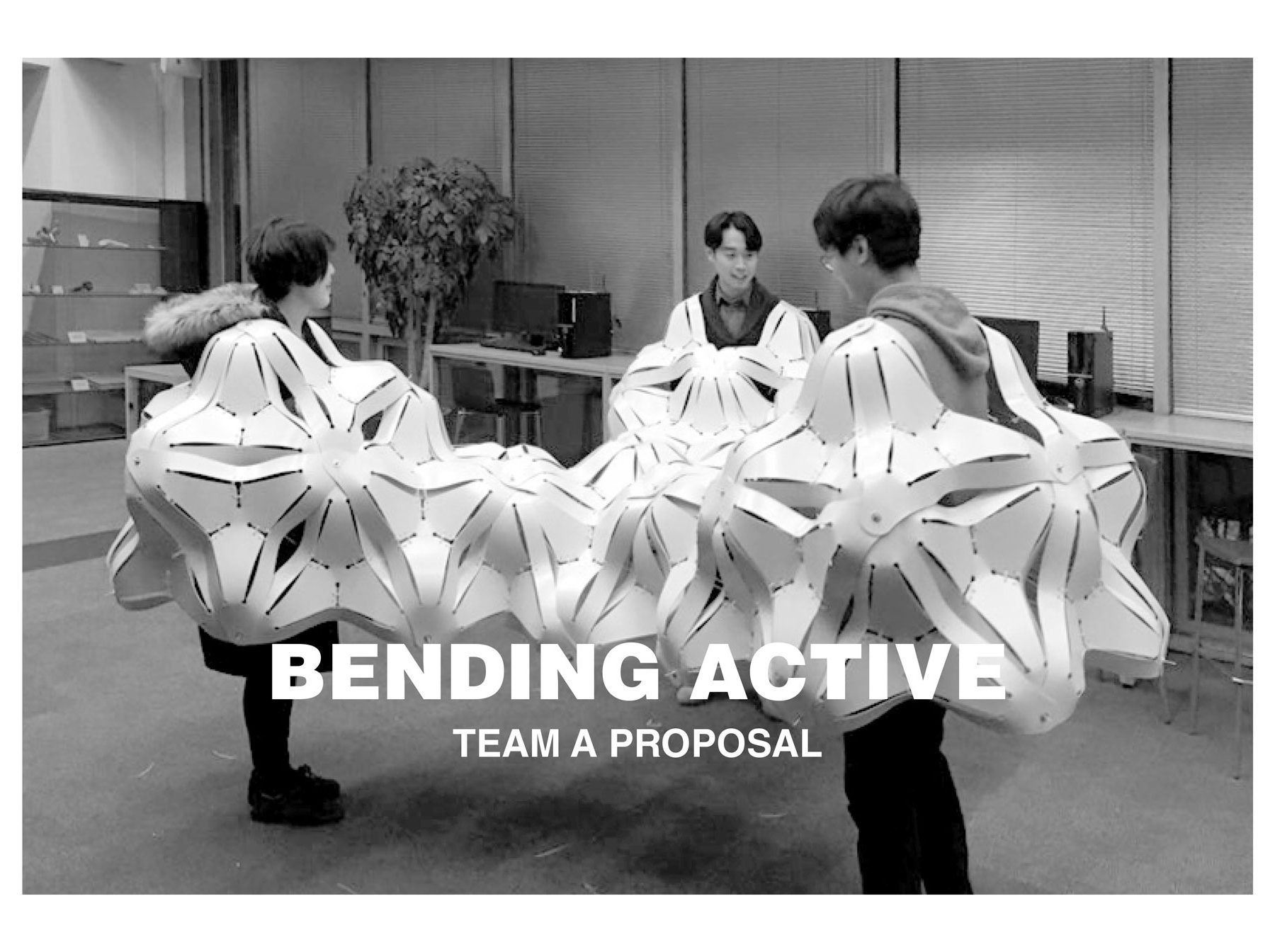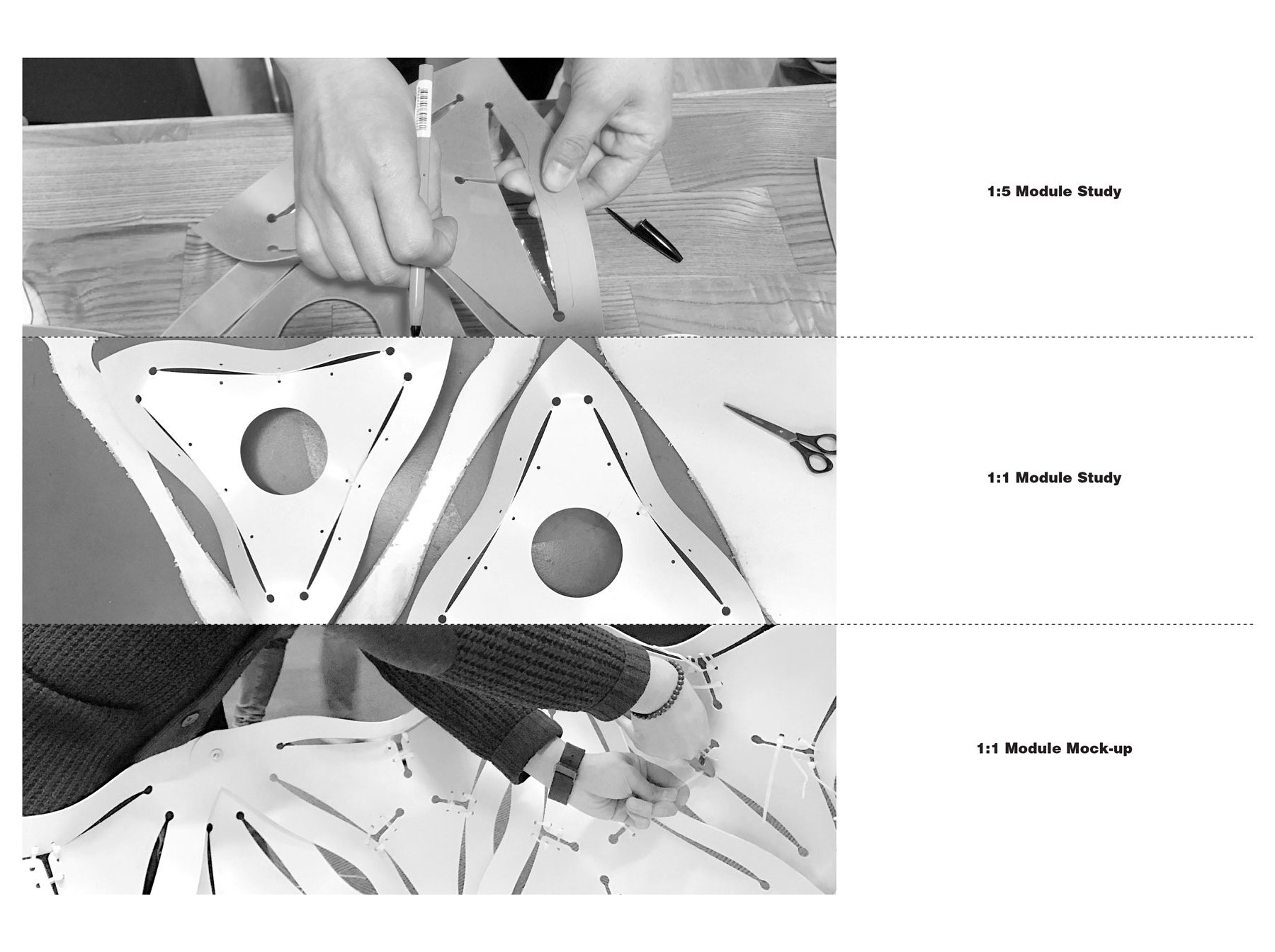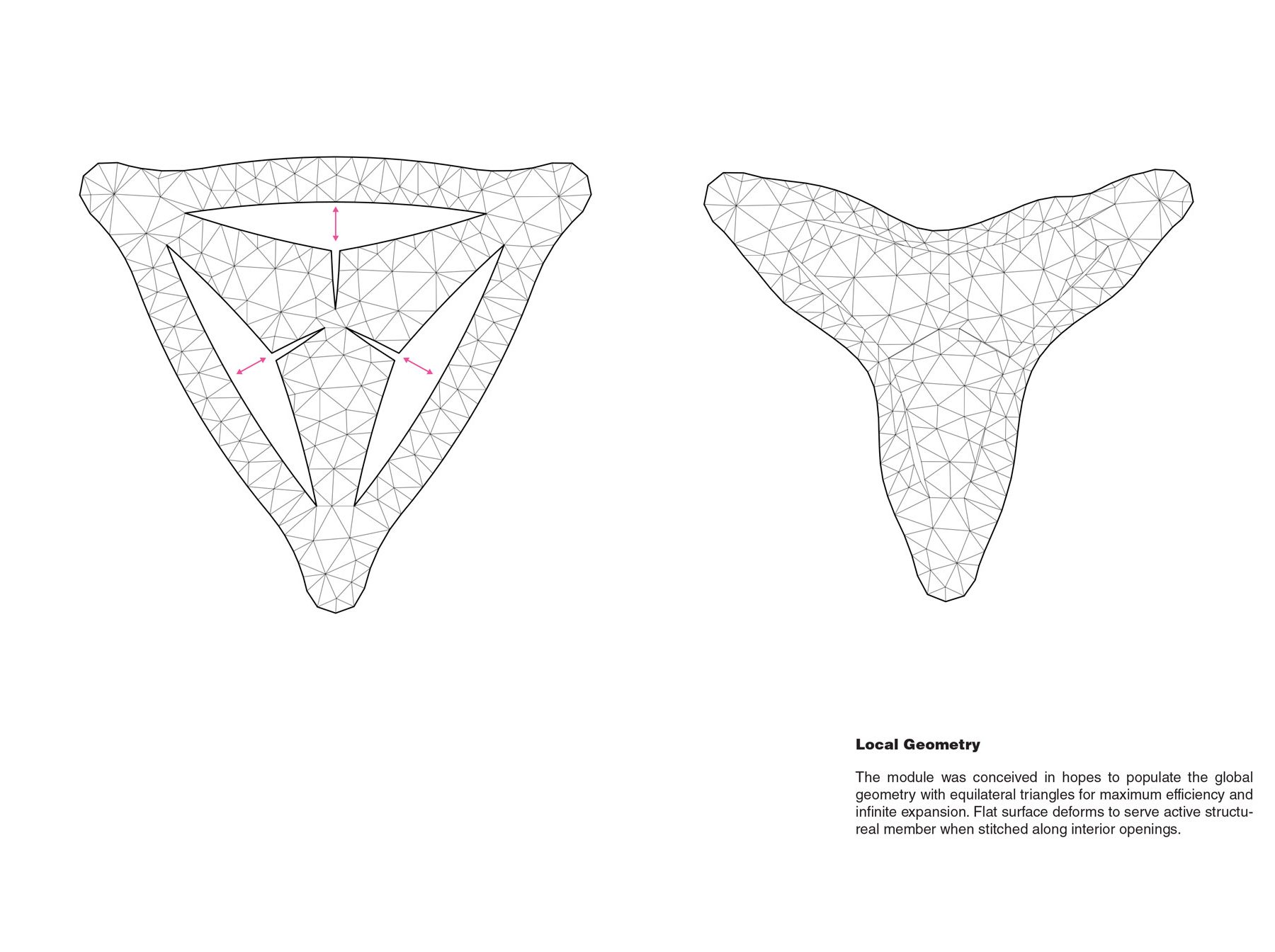FrontlineWorkshop - Bending Active, Pattern Tree

This project intends to investigate synthetic morphologies that incorporate the effect of external forces onto the intrinsic material behavior specifically through contemporary computational design tools. There have been rigorous design investigations to design and discover novel shape-formation strategies in regards to optimizing material and structural redundancy. Such investigations involve synthetic design processes of physical forces, material properties and constraints of making processes. Key elements of Gothic architecture such as vaults, buttresses, and arches are the most seminal examples of the methodological integration of force and matter into formal and structural expressions.

Nevertheless, segmentation of singular surfaces for the purpose of fabrication has continuously been problematic due to arduous labor requirements and long production time limitations. A recent solution that utilizes current digital tools has thus turned to bending active materials and strip based fabrication processes to resolve the enduring concerns. Pattern is an example of a project that utilizes soft bending materials as architectural building modules to produce a novel complex form that can be physically fabricated with minimal manual involvement and high efficiency at both the form-finding level and the physical making level.

This project aims to produce a physical construction through digital form-finding based on a global geometry affected by two forces-bending force on the outer edge and elastic force on the inner surface. The elastic force is the innate behavior of the material itself that responds to the external bending force to the surface edge. The team started from a simple uv-surface base geometry onto which computational tools were applied to produce deformation that combines the bending and responsive elastic behavior. Once the digital form-finding produced the desirable global geometry, more computational tools were operated to interpret the global geometry to fabrication-able scale. At this phase of digital analysis of the global geometry, setting the parameter to control the directionality of the mesh’s triangulation and strip-formation proved to be an essential part of the design.

This directionality that governs the triangulation and most importantly the strip layout of the model is based on the Steiner Tree algorithm. The final layout of strips is easily interpretably at physical scale as these can be cut and weaved together at the various seams. Digital computational tools with a combination of physical small scale test models were used to design the joints along these strips to join together the various strips at physical scale to produce the force driven single surface structure.